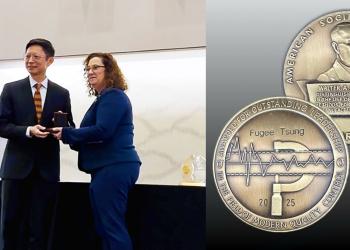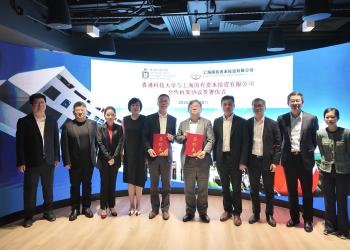HKUST Chemists Unveil Mechanisms of Photosynthesis for Promising Renewable Energy Development
A research team at the Hong Kong University of Science and Technology (HKUST) has solved a long-standing question in photosynthesis which provides insight into the design of artificial photosynthetic systems that may serve as alternative energy devices by effectively utilizing the sunlight. The research was led by Assistant Prof Xuhui Huang and Prof Yijing Yan of the Department of Chemistry and their findings were recently published in the prestigious journal Nature Communications.
In photosynthesis, sunlight is used to extract electrons from water to produce oxygen. This chemical reaction occurs in the reaction center of the Photosystem II (PSII) protein, which is the location of the oxygen production and source of nearly all the atmosphere’s oxygen. PSII protein contains many pigments such as chlorophyll. These pigments are distributed symmetrically into two branches; however, only one branch,namly the active chain, is responsible for transferring electrons to produce oxygen. In other words, only half of the pigments in the reaction center actively participate in the production of oxygen. The functional asymmetry of the two chains has remained a long-standing puzzle for scientists to understand the mechanisms of photosynthesis.
The HKUST research team revealed the secrets behind this phenomena by applying theoretical chemistry tools such as molecular dynamics and quantum mechanics calculations. They discovered that the dynamic and asymmetric protein environment makes one specific chlorophyll, CLA606, in the active chain significantly easier to be activated by sunlight energy, thus leading to the electron transfer along the active chain. They further pinpointed several critical protein residues in this process, and found that the alteration of these residues may disable PSII’s ability to distinguish between the active and inactive chains.
Prof Xuhui Huang explained that it is crucial to consider protein dynamics rather than the static X-ray structure in order to explain the preference of energy activation towards the active chain. The research team have used high-performance computers including those from the HKUST School of Science’s computer cluster to successfully identify the site energy difference of the two chains and further pinpoint the critical active chain pigment CLA606.
The results will provide insight into the fundamental mechanisms of photosynthesis and potential applications for the rational design and engineering of the photosynthetic machinery. They also show potential applications in physical chemistry, molecular biology and material science.
Prof Xuhui Huang graduated from the University of Science and Technology of China and obtained his PhD from Columbia University. He worked at the Stanford University before joining HKUST in 2010. He has received the American Chemical Society OpenEye Outstanding Junior Faculty Award, the Hong Kong Research Grant Council’s Early Career Award and HKUST School of Science Research Award in recognition of his outstanding research achievements.
For media enquiries, please feel free to contact:
Ella Au Yeung
Tel: 2358 6306
Email: ellaauyeung@ust.hk









